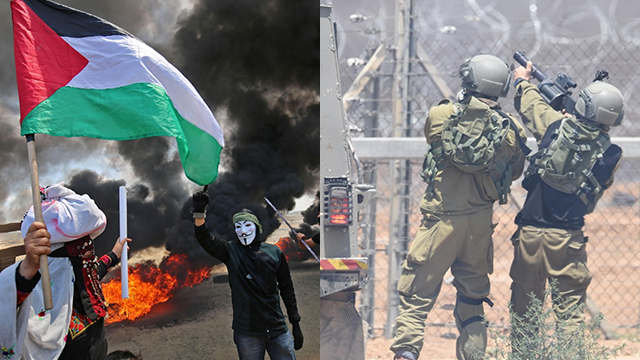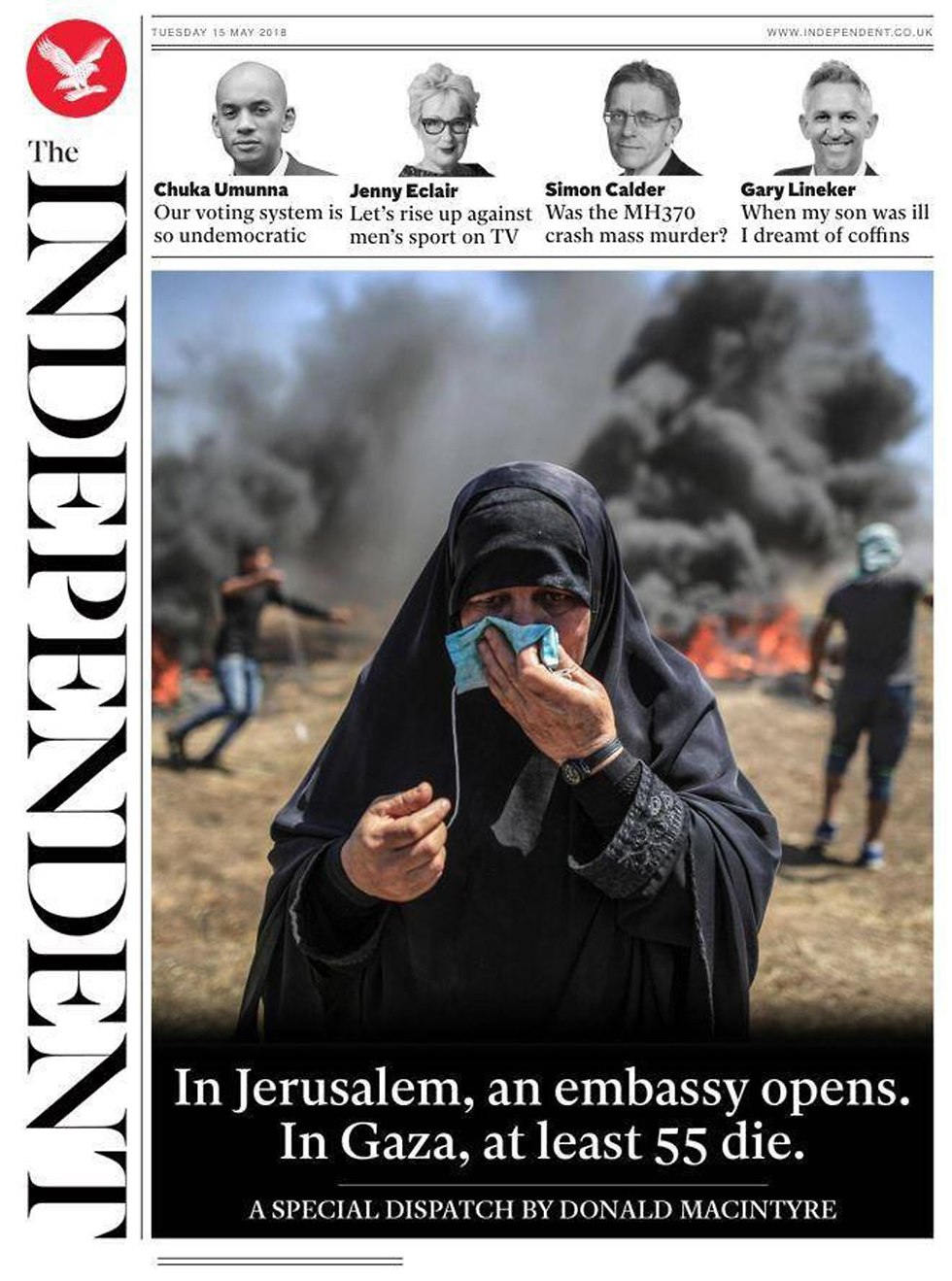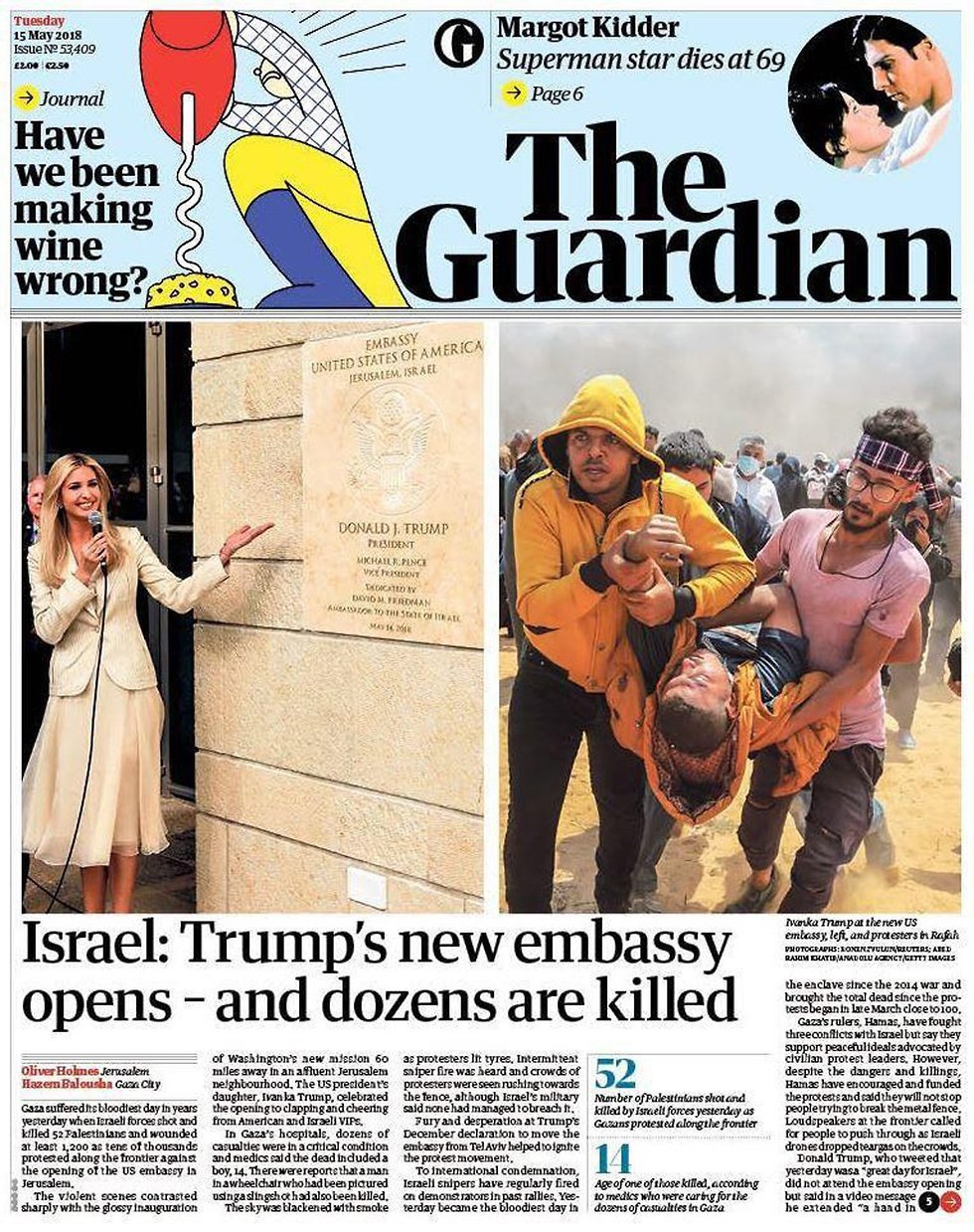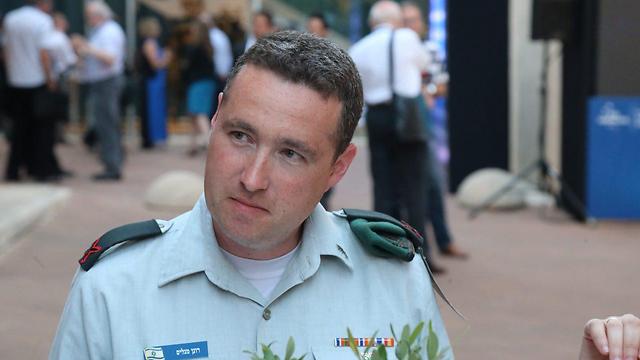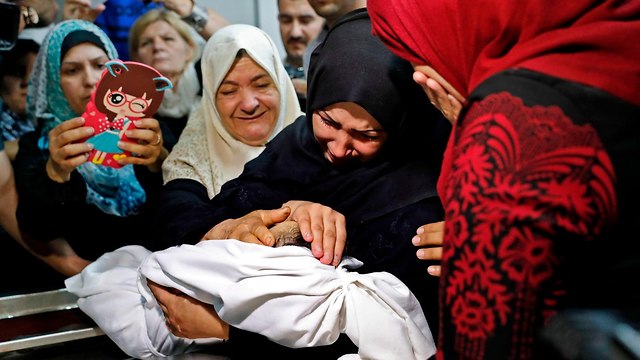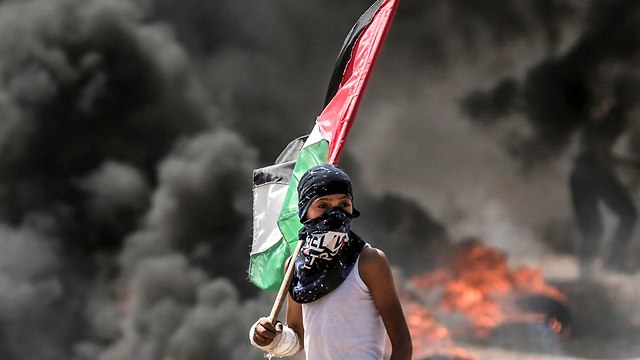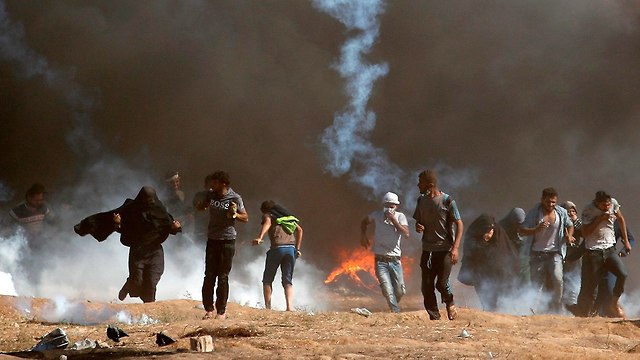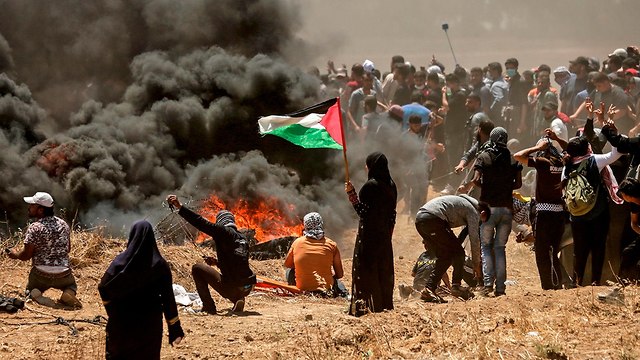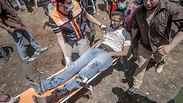
Israel’s PR failure on Gaza border fence
Op-ed: While Hamas had full control over the images, footage and interviews from the ‘non-violent’ protests in the strip, the IDF spokesperson kept journalists at least 2 kilometers from the fence and released only several dozen unclear images and short clips from security cameras and quadcopters. It’s no wonder the Hamas narrative scored a clear victory in the global media.
Monday’s international news broadcasts and Tuesday morning’s newspaper headlines in Europe and in most countries of the free world point to a perceptual victory for Hamas and the Palestinian terror organizations operating in Gaza.
They managed, unchallenged, to sway the public opinion in Europe, North America, many countries in Asia and in Eastern Europe as well, into believing that the Palestinians who got hurt on the fence were “innocent protestors trying to break the siege on the Gaza Strip through non-violent protests” —a simple and catchy narrative backed by hours of video footage and thousands of still images from the Gazan side, raising it to the level of a heroic struggle by the Palestinian people against their oppressors.
This huge flow of visual information and interviews with Palestinian “protestors” on the fence and with Hamas speakers was countered, on the Israeli side, by a thin drizzle of several dozen still images which mean nothing to an inexperienced eye, as well as short clips—10 to 20 seconds—from security cameras and quadcopters and a few photographers from the “combat documentation” of the IDF Spokesperson’s Unit.
In a world where visual material and fake news are the main shapers of public opinion, volume is significant. And what happened on Monday was that the visual volume, which came entirely from the Palestinian side, struck a chord even those who are usually willing to listen to the Israeli arguments.

I watched Monday’s broadcasts on television, on news websites and on social media. Ninety percent of the feed came from the Palestinian side. Moreover, the foreign reporters were able to report without any disruptions, and the Palestinian “protestors” were eager to give interviews, pose for photographs and share what they had heard on Hamas’ media outlets that day.
Sometimes, the interviews were held under the watchful eye of a Hamas or Palestinian Islamic Jihad member who was listening from the side with his hands folded behind his back.
More importantly, the photographers for the foreign reporters and the international and regional news agencies were Gazans, some of whom are declared Hamas members.
From the IDF Spokesperson’s Unit, we received an unclear documentation from thermal imaging cameras, without any interviews with soldiers. The Israeli and foreign reporters who wanted to cover the events from the ground were assembled by the IDF spokesperson like a herd in observation spots located at least 2 kilometers from the fence, where they were unable to see a thing or receive close-up images (which poured in from Gaza in abundance). The information was also limited to what the IDF spokesperson was willing to release.
The IDF spokesperson could have also sent his combat documentation photographers to join the fighters on the front line, to closely document the Gazans storming the fences. Not just those who tried to carry out terror attacks, but those who placed the soldiers in a life-threatening situation or at risk of being kidnapped. But the combat documentation crew are apparently engaged in other things related to the IDF’s image.
While the IDF Spokesperson did have control over the information distributed, the State of Israel lost the public opinion battle. This defeat in the area of public diplomacy isn’t the first of its kind and likely won’t be the last either. Because IDF spokespeople throughout the generations—excluding Nachman Shai and Miri Regev—always favored the ability to control and manipulate the information coming out from Israel over the chance to actually influence the public opinion in Israel and around the world.
So there were no Israeli reporters and photographers with the IDF forces who had to deal with the Gazans storming the fence Monday. They were at a safe distance from the fence, where they were in no danger of being hit by a rock or by a marble fired from a sling or, God forbid, inhaling teargas. The Israeli reporters and photographers wanted to get closer, they weren’t afraid, but the IDF spokesperson's unit decided where they should stand, making it impossible for them to see and document the crowds of Gazans sent by Hamas to commit suicide on the fence.
As a result, neither we nor the international media received images and firsthand testimonies illustrating the danger and the threat to the snipers and other IDF forces deployed along the fence.
On the other hand, we got plenty of images and hours of video footage from the inauguration of the US ambassador’s office in Jerusalem, without any official or semi-official mention of what was going on at the same time on the Gaza fence, apart from a number of tweets from Defense Minister Avigdor Lieberman which got lost in the general commotion.
It’s no wonder that all of Britain’s newspapers accepted the Palestinian narrative which said that the “non-violent protestors” on the Gaza strip fence, who were protesting against the opening of the American embassy in Jerusalem, were massacred by IDF soldiers. We brought this calamity upon ourselves. It’s our failure.
I’m not talking about the response from Turkish President Recep Tayyip Erdogan, who recalled his ambassador to Israel and expelled the Israeli ambassador and consul, or about the crowds that demonstrated in Turkey, or about Kuwait demanding a UN Security Council meeting, or about Egypt and South Africa and several other countries which automatically support everything Hamas does. We, the State of Israel, have failed in explaining a simple fact: The Gaza residents’ distress is first and foremost a result of Hamas’ insistence on maintaining its military wing and its ability to grow stronger undisturbed.
That’s the real reason the Palestinians who rioted on the fence died, and they did so in vain. If Hamas would at least agree to stop its military wing and the Islamic Jihad from building their strength, Palestinian President Mahmoud Abbas would release the funds he restricted to Gaza, Israel would allow and execute major reconstruction projects in the strip and the Egyptians would agree to open the Rafah Crossing without limits.
But Hamas remained intransigent, and instead of investing funds in the Gazans’ welfare, it prefers to dig attack tunnels and produce missiles, while claiming to send people to their death on the fence to “break the siege.”
Israel’s failure in calling the bluff—first and foremost visually, but also content-wise—is creating public opinion damage which can’t be fixed by an American ambassador’s office moving to Jerusalem.










